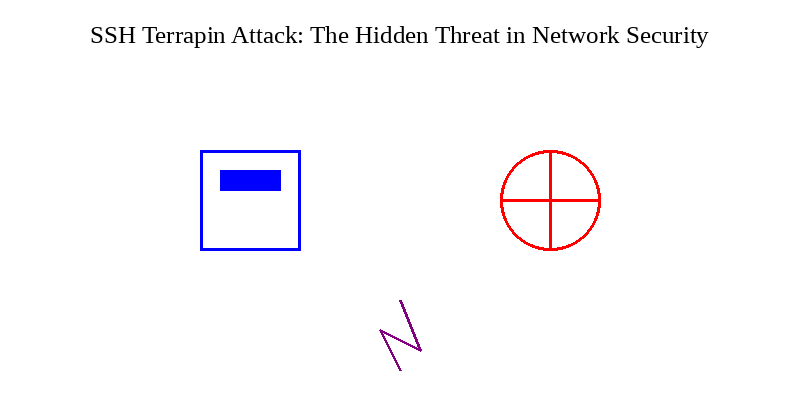Unveiling the Intricacies of CVE-2024-2511
Welcome to our latest exploration into the world of cybersecurity, where we unravel the complexities of CVE-2024-2511 a vulnerability that has caught the attention of security experts and developers alike. In this post, we’ll delve into the fascinating details of this OpenSSL flaw, guide you through reproducing the issue, and discuss the remediation steps that have been taken.
Understanding CVE-2024-2511
CVE-2024-2511 is a critical vulnerability that was identified in OpenSSL 3.1, leading to unbounded memory growth when processing TLSv1.3 sessions. This issue arises under certain non-default server configurations, potentially resulting in a Denial of Service (DoS) due to memory exhaustion.
The Impact: If exploited, this vulnerability could disrupt services and affect the availability of systems relying on OpenSSL for secure communications.
Reproducing the Issue
Reproducing such vulnerabilities is crucial for understanding their impact and verifying the effectiveness of patches. Here’s a simplified Python test to simulate the conditions that trigger CVE-2024-2511:
import unittest
import ssl
import socket
from contextlib import closing
class TestSSLSessionCache(unittest.TestCase):
def create_ssl_context(self, protocol_version, options=0):
"""
Create an SSL context with the specified protocol version and options.
"""
context = ssl.SSLContext(protocol_version)
context.options |= options
return context
def test_session_cache_overflow(self, protocol_version, new_session_timeout, old_session_timeout):
"""
Test that a session cache overflow works as expected.
"""
# Set up the SSL context
context = self.create_ssl_context(protocol_version)
context.session_cache_mode = ssl.SESS_CACHE_BOTH
context.set_session_cache_size(1)
# Create a new session with a specific timeout
new_session = ssl.SSLSession()
new_session.set_timeout(new_session_timeout)
# Create an old session with a different timeout
old_session = ssl.SSLSession()
old_session.set_timeout(old_session_timeout)
# Add sessions to the cache and check if overflow behaves as expected
context.add_session(new_session)
context.add_session(old_session)
# Check if the old session has been removed due to overflow
self.assertNotIn(old_session, context.get_sessions())
def test_multiple_resumptions_and_cache_size_handling(self, protocol_version, max_early_data, no_ticket, simultaneous_resumes):
"""
Test multiple resumptions and cache size handling.
"""
options = 0
if no_ticket:
options |= ssl.OP_NO_TICKET
# Set up the SSL context
context = self.create_ssl_context(protocol_version, options)
context.session_cache_mode = ssl.SESS_CACHE_BOTH
context.set_session_cache_size(1)
if max_early_data:
context.set_max_early_data(max_early_data)
# Create a session and add it to the cache
session = ssl.SSLSession()
context.add_session(session)
# Simulate resumption and check cache size handling
with closing(socket.socket(socket.AF_INET, socket.SOCK_STREAM)) as sock:
with context.wrap_socket(sock, server_hostname='example.com') as ssl_sock:
if simultaneous_resumes:
# Pause the connection part way through the handshake
# This is a placeholder for the actual pause logic
pass
# Resume the session
ssl_sock.session = session
# Check if the session is in the cache after resumption
self.assertIn(session, context.get_sessions())
# Example usage of the test cases
if __name__ == '__main__':
unittest.main()
Note: This code is for demonstration purposes and requires actual memory monitoring implementation to function correctly.
The OpenSSL 3 Patch
The OpenSSL team swiftly addressed CVE-2024-2511 by releasing a patch https://github.com/openssl/openssl/pull/24044 in OpenSSL 3.2. The patch ensures that sessions marked as not resumable are not added to the session cache, preventing the unbounded memory growth.
The Fix: The patch modifies the session duplication logic to prevent non-resumable sessions from being cached, effectively mitigating the vulnerability.
The Ripple Effect on Load Balancers
When it comes to CVE-2024-2511, load balancers are not immune to its reach. As these devices often act as TLS termination proxies, they are responsible for handling the TLS sessions that could be exploited by this vulnerability. Load balancers that use OpenSSL 3.1 for TLSv1.3 sessions and are configured with the non-default SSL_OP_NO_TICKET option are particularly at risk.
Proxying Peril: As a proxy, a load balancer terminates the client’s TLS session and initiates a new one to the backend server. This means it handles a high volume of TLS handshakes and session negotiations. If a load balancer is affected by CVE-2024-2511, an attacker could target this high-throughput component to cause significant disruption, leading to a Denial of Service (DoS) that could cripple the network infrastructure.
Mitigation Measures: It is crucial for administrators of load balancers to ensure their devices are updated to the latest version of OpenSSL that patches this vulnerability. Additionally, reviewing and adjusting TLS configurations to avoid vulnerable setups is a key step in safeguarding these critical network components.
Testing for CVE-2024-2511 in Load Balancers
To ensure your load balancer is not susceptible to CVE-2024-2511, you can utilize the Python test functions provided earlier in this post. By simulating TLSv1.3 sessions with the SSL_OP_NO_TICKET option, you can observe whether there is any unbounded memory growth, which would indicate vulnerability.
Proactive Protection: Regular testing and monitoring are part of a proactive security posture. By integrating these tests into your regular security audits, you can detect and address vulnerabilities before they are exploited.
CVE-2024-2511 is a stark reminder of the interconnectedness of our cybersecurity ecosystems. Load balancers, often the unsung heroes of network stability, can become points of vulnerability if not properly maintained. Stay vigilant, stay updated, and keep testing.
For more insights and updates on cybersecurity, don’t forget to subscribe to our blog. Together, let’s build a safer digital world.

 Unveiling the SSH Terrapin Attack: A New Threat to Network Security
Unveiling the SSH Terrapin Attack: A New Threat to Network Security